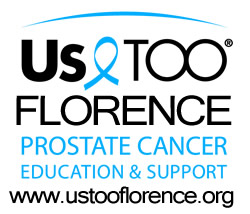|
||||||||
| Home | News You Can Use |
About Us TOO Florence |
Personal Journeys | Slideshows | Contact Us | |||
| Each man's Journey is listed under his BASIC treatment. When you click on one of the names to read a particular Journey, you may see one or more different treatments in bold lettering immediately above the Journey text. You will see (Recurrence) if they are due to a recurrence. Otherwise, they will be treatments used in conjunction with the basic treatment, i.e. Lupron with External Beam Radiation or External Beam Radiation with HDRT/Brachytherapy, etc. | |
Active Surveillance Alternative (Natural) Therapy Cryoablation - Freezing Hormone Therapy Radiation - Brachytherapy Radiation - External Beam Radiation - HDRT Surgery - Open Surgery - Robotic |
Back in the 1960s, while living in Corona, Calif., I had experienced and been treated for an enlarged prostate and two kidney stones. Having those problems kept me in the care and under the watchful eye of urologists, so when I moved to Florence it seemed logical to continue that care. I was able to get in to see Dr. Peter Bergreen and remained with him for about 15 years. When he gave up traveling to the Florence office, I switched to Dr. Bryan Mehlhaff so I could continue being seen in Florence instead of going to Springfield. Dr. Mehlhaff became concerned when my total PSA reached 7.7. He asked me if I wanted a biopsy of my prostate to see if cancer was involved and I said yes. That was done on September 26, 2006, just days after my 85th birthday. The result was that I had prostate cancer, but Dr. Mehlhaff said mine wasn't bad and men usually die with prostate cancer, not from it. The biopsy involved 12 specimens with eight showing benign prostate tissue and four being positive for prostate cancer. Those four indicated a moderately aggressive cancer with each having a Gleason Score of 7 (4+3). A Gleason Score of 7 can be either a (3+4) or as mine, a (4+3). That makes mine a bit more aggressive because the first number recorded is that of the dominant cancer identified by the pathologist. The second number is the next most dominant cancer. The pathologist is looking at the cancer cells and assigning a number up to 5 based on their appearance. Non-aggressive cancer cells getting a score of 1 will be well differentiated and aggressive cells earning a 5 will almost look like mush, basically indistinguishable from each other. Yes, there is a difference between a (3+4) and a (4+3). When the pathologist starts seeing cancer cells of 4, it's getting to be serious business. Of course, in my case, I was already 85 years of age, my PSA was only 7.7 and cancer was found in only 4 or the 12 needle specimens. I'm sure Dr. Mehlhaff took all of that into account when he told me I had prostate cancer, but it wasn't too bad. I started attending Man to Man on October 16, 2006, following my diagnosis. I was encouraged to see so many men who had been diagnosed with prostate cancer and undergone treatment picking themselves up and going on with life. And, having urologist Dr. Mehlhaff present at the meetings to answer our questions, explain information in the news (which isn't always the way it looks) and take time after the meeting for more personal questions is just outstanding. Since treatment options are based in part on the aggressiveness of the cancer, age and overall health of the patient, this meant that I was more of a candidate for active surveillance, hormone therapy or other non-invasive treatments rather than surgery. After discussing the options with Dr. Mehlhaff, I chose to go with the hormone therapy, that is, Lupron. I chose to start a regimen of three-month Lupron injections. This would hopefully take away my testosterone and stop the cancer from growing. In my case, it worked just that way. My PSA is now "less than" 0.008. To those of us knowledgeable about PSA readings, that kind of score is termed "undetectable." Of course, taking my testosterone away subjected me to some of those hot flashes and a reduced level of energy, but I'm satisfied that I will die with prostate cancer not because of it. I consider myself one lucky man for being under the care of Dr. Mehlhaff and attending Man to Man where I gain important decision-making information and support. And, even though I'm 88 going on 89 years of age, I am still attending the Man to Man meetings for the information that I can gain and the support that I can give to others. |
| www.ustooflorence.org Copyright © 2010 - 2025 | |

